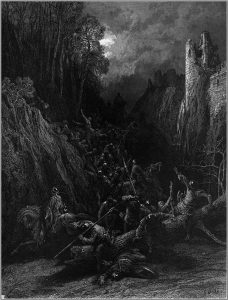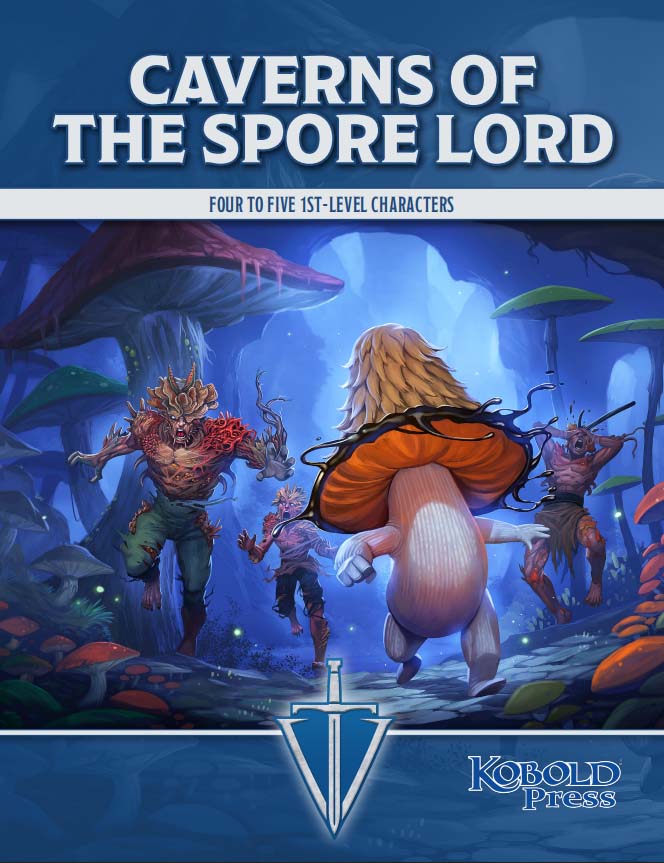
The trap is a D&D icon. Classic dungeons such as Tomb of Horrors and The Hidden Shrine of Tamoachan are famous for their mechanical ambushes. Traps are so central to the concept of dungeons that an entire class—the thief—was developed to deal with them (along with locked doors).
In real life, of course, archaeologists have never had to deal with this abundance of traps in ancient tombs and ruins. No trap of any kind has been found in an excavation: no scything blades, no darts with pressure-plate triggers, not even poisoned needles in treasure chests. Sliding blocks have been used to seal passages but never to squash intruders. Deep pits were dug in the entrance corridors of some tombs, but they were meant only as obstacles. The pits weren’t covered, so only the most irresponsible of thieves risked falling in, and none of them left behind skeletons with broken legs. Tomb architects went to great lengths to keep people out, but no thought was given to killing them once they got in.
GMs need to put some thought into it. Before putting a death trap in that hallway, you need to ask exactly what it’s for. Designing a clever, challenging, logical, dangerous, and yet enjoyable trap is one of the toughest tests facing a GM.
This simple diagram looks at a trap’s purpose from two angles: whether characters are meant to spot the trap, and whether they’re meant to trigger it. When placing a trap in an adventure, the GM should know the answers to those two questions.
| PCs Don’t Find Trap | PCs Find Trap | |
| PCs Trip Trap | Story Traps | Obstacle Traps |
| PCs Don’t Trip Trap | Back Trap | Death Trap |
Obstacle traps are meant to be found but are devilishly hard to disarm or avoid. The characters will either spend time and resources dealing with the trap, search out a detour to go around it, or trigger it and take the consequences. In all three cases, the trap achieves its purpose. Obstacle traps aren’t really traps at all; they’re problems or puzzles to be solved, presented in the guise of a trap.
Death traps are meant to be found and avoided. No GM really wants to kill characters with a trap they didn’t know was there. A fatal gotcha like that serves no purpose. A death trap is most effective when characters discover it, understand that it’s 98% lethal, and figure out a way to avoid it. Dodging that bullet can be one of the game’s biggest vicarious thrills.
A trap that’s meant to be overlooked and triggered is a story trap. Triggering it advances the plot in some important regard, possibly in a way that only a trap can. It might be how the characters fall into the clutches of slavers, how one of them is affected by a curse, or how they’re dumped into a portion of the dungeon they’d rather avoid. Story traps don’t kill and seldom cause serious injury. What they do is change the situation in unexpected ways.
Characters aren’t expected to find or trigger traps in the fourth category—back traps. It might seem that these serve no purpose, but that’s not necessarily true. A back trap is perfect for an area that characters are expected to pass through multiple times—say, on their way into the dungeon and again on their way out. Players assume that an area is safe if no traps are spotted and none are set off when characters move through. With a back trap in place, they’re in for a shock on the return trip.
Of course, the back trap doesn’t need to go off then, either. When characters meet a back trap on the rebound, it can function as an obstacle, a story trap, or a death trap. A death trap is doubly effective in this situation, because players won’t miss the fact that they walked blithely through it once.
This system is just one of many ways for a GM to look beyond a trap’s trigger and effect to get at its true role in the story. Which one works best for you?


Oooh, I like the “back trap”! Using the common pit-trap, It could “trigger” but not “operate” on the first run-through, only moving to the “operating” stage after a small amount of time has passed. For a one-way-in-one-same-way-out dungeon, this would be a devilish trap. And if they who passed in but died further elsewhere in the dungeon have tripped the initial stage then the pit is waiting in the “operant” state for the next intrepid band to enter…
Another idea of a back trap is one that requires several triggers to be activated. It’s also a good idea for a trap in an occupied area. The average resident knows the triggers and knows how to reset it. But because it’s not triggered immediately, it’s more forgiving on people who forget it or make a mistake. I’ve always thought it a little silly that people would have traps in their homes that will kill them if they step on the wrong stone.
Rigging a trap with a remote trigger is one of those tricks that gets overlooked too often (at least it seems that way to me): Siegfried steps on a pressure plate and Siegmund falls through the floor. The same concept works perfectly for arming a back trap.
Actually, they fully expect to deal with automated crossbow traps in at least one Chinese tomb, thought to belong to the emperor of the Qin dynasty. http://www.china.org.cn/english/culture/229549.htm (Guess #4) They haven’t dealt with them yet, because the government isn’t planning on opening the tomb yet, but you can bet there probably *will* be crossbows, based on the fact that stories indicated he had an enormous landscaped map of China built inside with mercury for rivers and there’s about a hojillion times the mercury expected in soil samples taken from the site. So, if they didn’t fib about the mercury then they probably didn’t fib about the automated crossbows. In that case, you go in first. ;)
-Ben.
My favourite back trap is to slowly flood the dungeon, particularly those dungeons on multiple floors. It is relatively easy to work out prior to the game. Decide on the cubic volume of water entering the dungeon per minute/hour and do a side view of your dungeon to show the rising level of water over a period of time. You can also disguise the initial influx of water as a water feature. A fountain and pool on a lower floor perhaps. Once the dungeon has flooded to a certain level, water or air pressure can trigger a release mechanism and the water drains away. Good for dungeons next to the ocean or near a river and you can offer plenty of clues to the PCs. Corpses that appear to have drowned (should they bother to examine them). Water damaged items, mildew, algae, fish bones and the like. As a twist I made all the corpses that the party encountered Lacedons that only became alive when fully immersed in salt water.
What about traps as a challenge to the player with no role in the story? The point is to avoid them through skillful play (probing the area of the floor that is riddled with cracks, looking up, etc).
That is the mode traps seem to occupy in many OSR games.
You also missed the most obvious trap on the most obvious tomb of them all… the pyramids were protected by a curse so powerful that it was many thousands of years later that they were finally broken into. And what happened next with that curse has passed into folklore.
If there are crossbows in Qin’s tomb, I’d be shocked if any of them work after 2,000 years.
Normally occurring levels of mercury in soil are .05 to .08 PPM (parts per million). Concentrations around Qin’s tomb are as high as 15 PPM, or 150 to 200 times normal. That’s high, but even in the environmentally conscious US, the area wouldn’t qualify as contaminated; the EPA rates concentrations up to 23 PPM as safe. If the 15 PPM of Hg leeched into the soil from the tomb, then there can’t be much left flowing poisonously in Qin’s model rivers.
As for the pyramids, they were looted while Egypt was still ruled by pharoahs. Looted so thoroughly that archaeologists haven’t found anything in them but scraps of junk and broken looters’ tools. Not even bodies. As vaults against thievery, the pyramids were the most colossal failures in history. The most powerful pharoah of all, Ramesses II, had to be reburied twice by priests in a futile effort to keep ahead of looters. The only effective protection for a royal tomb was to conceal it so well that it would never be found. Even King Tut’s tomb had been broken into by thieves in the distant past. They just didn’t take much.
Who knows what might be found in Qin’s underground city? It might be a real game changer. But experience suggests that ancient mausoleum architects employed disappointingly few deathtrap builders.
Heck, I doubt a crossbow trap from ancient technology would last a couple of years. If it was cocked, you have to deal with the bow, string, frame and trigger retaining their properties under tension. That’s a lot of points of failure. If it’s not cocked, you still have to worry about the state of the crossbow, and a whole separate mechanism to cock it.